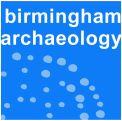Airborne LiDAR backscattered Laser Intensity Prediction of Organic Preservation
Keith Challis, Andy J. Howard, 2008. https://doi.org/10.5284/1000023. How to cite using this DOI
Data copyright © Keith Challis, Andy J. Howard unless otherwise stated
This work is licensed under the ADS Terms of Use and Access.
Primary contact
Keith
Challis
Birmingham Archaeology
Birmingham Archaeology
University of Birmingham
Edgbaston
Birmingham
B15 2TT
UK
Tel: 0121 414 5513
Resource identifiers
- ADS Collection: 827
- ALSF Project Number: 4782
- DOI:https://doi.org/10.5284/1000023
- How to cite using this DOI
Overview
Background to the Project
Lidar provides access to high resolution, high accuracy terrain information and as a secondary output a laser "image" of the land surface derived from measurements of the intensity of reflection of each backscattered laser pulse. Archaeological applications of Lidar have focused largely on its ability to provide a high resolution record of terrain variation, allowing the detection and mapping of subtle archaeological features mapping of fluvial geomorphology and its unique ability to penetrate vegetation cover to map underlying archaeological earthworks. Backscattered laser intensity measurements have largely escaped attention and little or no work has been undertaken to investigate intensity, which until now has been largely ignored both by archaeologists and by the lidar industry as a whole.
The Digital Archive
The digital archive is an integral part of the reporting process and comprises all files generated in electronic format generated during the course of the project, and for which permissions have been granted for deposit.
The archive contains the following reports:
- Challis, K., AJ Howard, M Kincey, D Moscrop, CJ Carey, T Hill, DN Smith, BR Gearey A Thompson, 2007. Analysis of the Effectiveness of Airborne Lidar Backscattered Laser Intensity for Predicting Organic Preservation Potential of Waterlogged Deposits. HP Vista Unpublished Report
The report comprises a brief review of the project aims and objectives (section 1: precised from the original PD), a discussion of the laboratory analysis of the relationship between NIR spectral reflectance and sediment properties (Section 2), discussion of the use of ground based laser scanning as an analogue for airborne lidar (section 3) a discussion of the analysis of airborne lidar intensity (section 4) and some general discussion and conclusions (section 5).
- Challis, K., AJ Howard, M Kincey, CJ Carey, 2008. Analysis of the Effectiveness of Airborne Lidar Backscattered Laser Intensity for Predicting Organic Preservation Potential of Waterlogged Deposits. HP Vista Unpublished Report
This document comprises a brief summary of the project background and aims (section 1), method statements (section 2), an account of the results of fieldwork and analysis of airborne lidar data (section 3), a discussion of the qualitative analysis of archive lidar intensity data (section 4), some discussion of the ability of lidar intensity to detect cultural archaeological remains (section 5) analysis and discussion of the impact of flight direction on airborne lidar intensity values (section 6) an overall discussion of results (section 7) and a concluding summary with a suggested protocol for the application of lidar data to geoarchaeological research (section 8)







